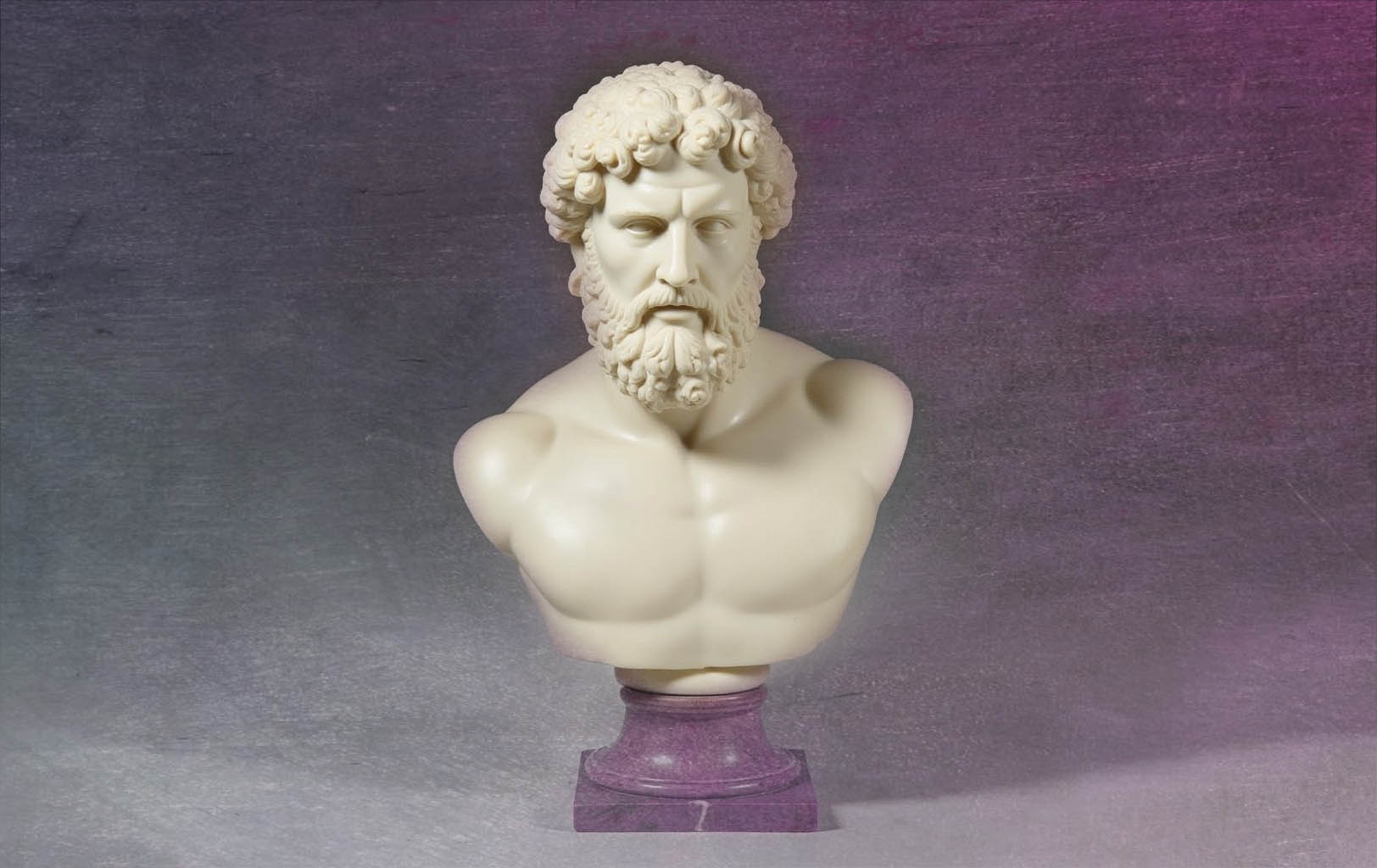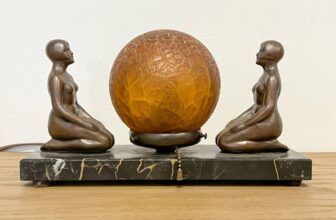
The Meaning of the Hercules Sculpture
In the heart of classical art and mythology, few figures stand as tall, both literally and metaphorically, as Hercules. The image of the powerful hero, clad in a lion’s skin and wielding unimaginable strength, has echoed through the marble halls of antiquity and into modern aesthetics. Among the many artistic representations of this legendary demigod, the Hercules Bust Sculpture holds a unique place.
This sculpture, often carved in pristine marble or cast in aged bronze, is not merely a decoration, it is a profound statement of strength, perseverance, and the triumph of the human (and divine) spirit. But what exactly does the Hercules sculpture represent? Why has it remained such a powerful image in art, and does this iconic bust find a rightful place in contemporary settings like a garden?
Let’s delve into the myth, the message, and the modern marvel that is the Hercules Bust.
Who Was Hercules?
Before we can truly appreciate the sculpture, we must understand the myth behind the man. Hercules, known as Heracles in Greek mythology and later adapted into Roman tradition as Hercules, is the son of Zeus and the mortal woman Alcmene. His very birth was fraught with divine intrigue and jealousy, particularly from Hera, the wife of Zeus, who despised Hercules for being the product of her husband’s affair.
To punish Hercules and prove his worth, Hera tricked him into committing a terrible act, he killed his own family in a fit of divine madness. As penance, he was given the seemingly impossible task of completing the Twelve Labors, a series of dangerous and grueling feats. These included slaying the Nemean Lion, capturing the Golden Hind, and cleaning the Augean Stables, among others.
These labors did more than just serve as punishment, they defined Hercules’ character. They represented a journey of redemption, endurance, and the relentless pursuit of justice and virtue. It is this very journey that makes his image so compelling in art and sculpture.
What Does the Hercules Sculpture Represent?
The Hercules sculpture, particularly in bust form, captures the hero not in the heat of battle but in a moment of powerful contemplation. It immortalizes his essence, strong, stern, and noble. Unlike full-body sculptures that may depict him mid-task or engaging in a labor, the bust focuses entirely on the face and upper torso, drawing the viewer into the raw emotion and strength of the figure.
1. Strength and Masculinity
At its core, the Hercules bust is a timeless representation of physical strength and virility. The strong jawline, chiseled features, and muscular neck all serve as markers of masculinity in classical sculpture. The lion’s pelt, draped over his shoulders in many renditions, references the first of his labors, killing the Nemean Lion, and becomes a metaphor for bravery and dominance over primal fear.
2. Heroism and Endurance
Beyond brute strength, Hercules symbolizes heroic endurance. Each of his labors was designed to test the limits of human perseverance. Artists often capture this resilience in the furrowed brow and intense gaze of the bust. It is the look of someone who has endured suffering and come out stronger.
3. Redemption and Humanity
Despite his divine heritage, Hercules’ story is deeply human. He commits a grave error and spends much of his life trying to atone for it. This struggle between his mortal flaws and his god-like strength is captured beautifully in sculpture. The bust often shows Hercules not just as a warrior, but as a man bearing the weight of the world, echoing his brief time serving Atlas, another titan of burden.
What Does Hercules Symbolize in Art?
Hercules has been a favorite subject in art for centuries, from ancient Greece to the Renaissance, and even in contemporary sculpture. The symbolism surrounding him evolves, yet always retains certain core themes.
1. The Ideal Man
In Renaissance and neoclassical art, Hercules was often depicted as the ideal man, both physically and morally. Artists saw in him a figure who combined physical beauty with virtue, making him the epitome of human potential. Michelangelo, for instance, drew inspiration from Hercules for many of his male figures, especially when exploring themes of humanism and divine proportion.
2. Protector and Guardian
In Roman times, Hercules was not just a hero, he was a guardian deity. Many Roman homes, baths, and public buildings were adorned with statues of Hercules to ward off evil and symbolize protection. The bust, in this context, served as a powerful totem against misfortune.
3. Triumph Over Evil
Hercules often represents the triumph of good over chaos, of light over darkness. His labors were not merely chores, they were acts of cleansing and order. Artists used his image to show that evil, no matter how monstrous, could be defeated by courage and willpower.
The Meaning of the Hercules Sculpture
The Hercules sculpture continues to resonate for modern audiences, albeit in slightly different ways. It is not just an art object; it is a statement piece.
1. A Symbol of Inner Strength
In a world full of personal challenges and mental battles, the image of Hercules can serve as a powerful reminder of inner strength. People look to this ancient hero not as a god, but as a symbol of the human ability to rise above adversity.
2. Classical Taste and Timeless Beauty
The sculpture also speaks to one’s taste in classical art and decor. Having a Hercules bust in your home, office, or garden isn’t just about aesthetics, it’s about aligning yourself with the grandeur of antiquity and the enduring values of the classical world.
3. A Conversation Piece
Because of its rich symbolism and mythological background, a Hercules bust always invites curiosity and conversation. It’s not unusual for guests to be drawn to such a sculpture, asking questions that lead into stories about myth, history, and personal interpretation.
Is the Hercules Bust Good for Garden Decor?
Absolutely, perhaps even ideally so.
1. A Garden of Gods
Placing a Hercules bust in a garden elevates the space from mere landscape design to something evocative of an ancient sanctuary. Classical sculptures have long been used to adorn gardens, think of the Villa d’Este in Italy or the gardens of Versailles. Hercules, as a hero of nature and conquest, is especially suited to outdoor display.
2. Weathered Strength
Unlike more delicate forms of art, bust sculptures, especially those made of stone, marble, or bronze, are built to endure. Like the hero they depict, they withstand the elements. A Hercules bust will age gracefully outdoors, developing a natural patina or weathered texture that only enhances its classical charm.
3. Symbolic Placement
Strategically placing a Hercules bust at the entrance of a garden path, near a water feature, or within a shaded alcove can create a narrative space. The bust can be a guardian, a guide, or a silent watcher over the plants and visitors alike. It instills a sense of mythology and grandeur into an otherwise modern space.
4. Feng Shui and Symbolic Balance
In feng shui and other energy-focused practices, statues of powerful figures are often placed to channel positive energy and repel negativity. Hercules, as a symbol of protection and power, fits perfectly into this philosophy. A well-placed bust can be more than just decoration, it can represent balance and strength in the garden’s energy flow.
Popular Styles and Materials for Hercules Busts
If you’re considering acquiring one for your garden or home, it’s worth exploring the different styles available.
1. White Marble or Resin Replicas
Perfect for neoclassical or Mediterranean gardens, white marble busts (or more affordable resin versions) carry the purity and elegance of ancient Greek art. They shine particularly well against green foliage or dark backdrops.
2. Bronze Hercules Busts
These offer a darker, more aged aesthetic. Bronze busts evoke the look of Roman antiquity and are especially resistant to weathering, making them perfect for outdoor installation.
3. Stone and Concrete Casts
For a rugged and timeless look, stone or concrete busts are heavy, durable, and develop a natural aging process that adds to their authenticity. These are ideal for gardens, courtyards, or even balconies.
Why the Hercules Bust Still Matters
The story of Hercules may be ancient, but its message is eternal. The bust sculpture, with its powerful imagery and symbolic weight, captures something deeply resonant about the human experience. It speaks of challenges faced and conquered, of strength honed through suffering, and of the beauty that lies in courage and resilience.
Whether placed in a study as a muse for thought, in a hallway as a protector, or in a garden as a silent sentinel among the blooms, the Hercules bust does more than decorate, it inspires.
In an age where much is fleeting and digital, a classical sculpture like this anchors us to history, myth, and meaning. It reminds us that while we may not be demigods, we all carry within us the power to overcome, to strive, and to triumph.
So yes, the Hercules Bust is not only good for garden decor, it’s perfect. More than art, more than myth, it is a symbol of enduring greatness.




